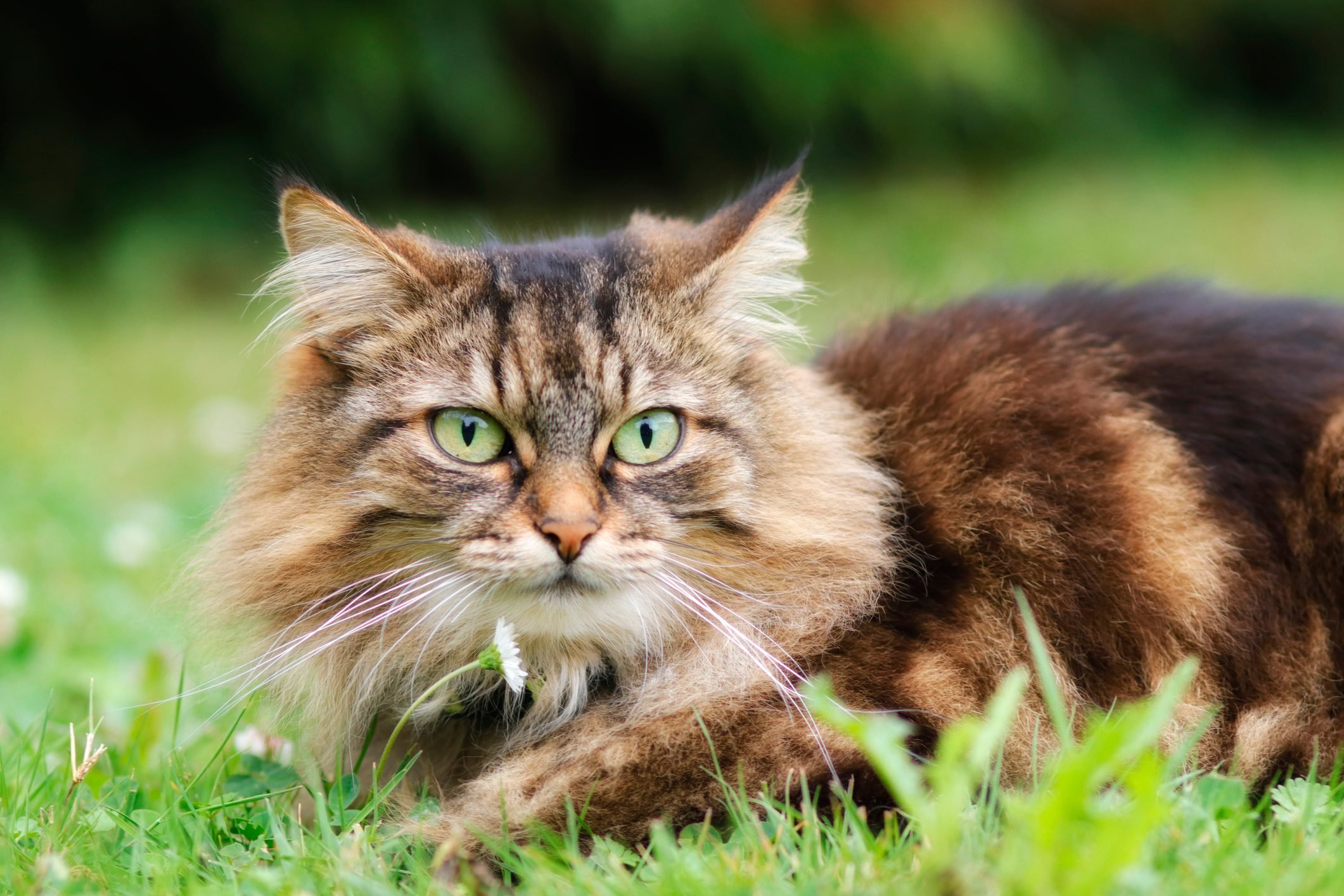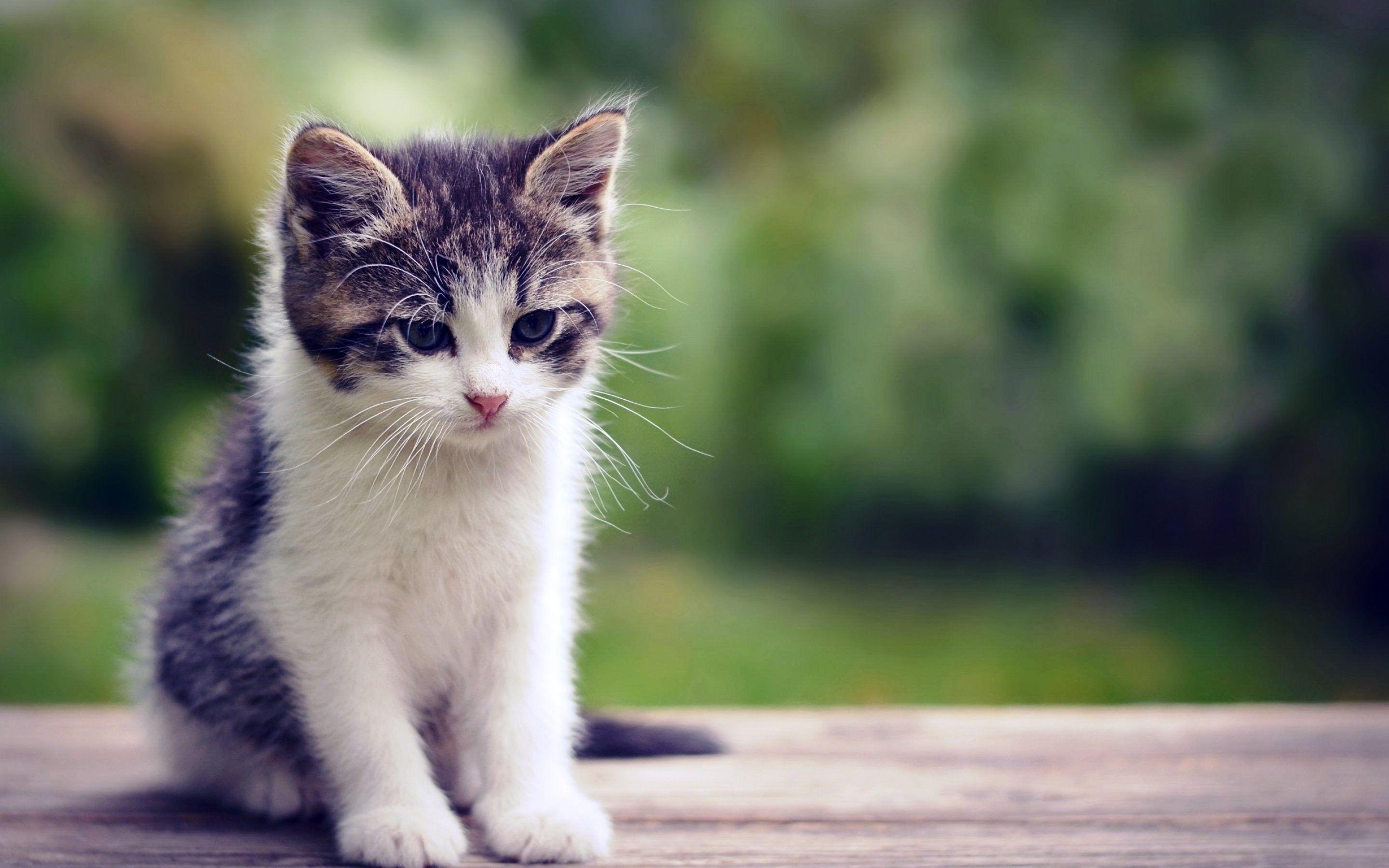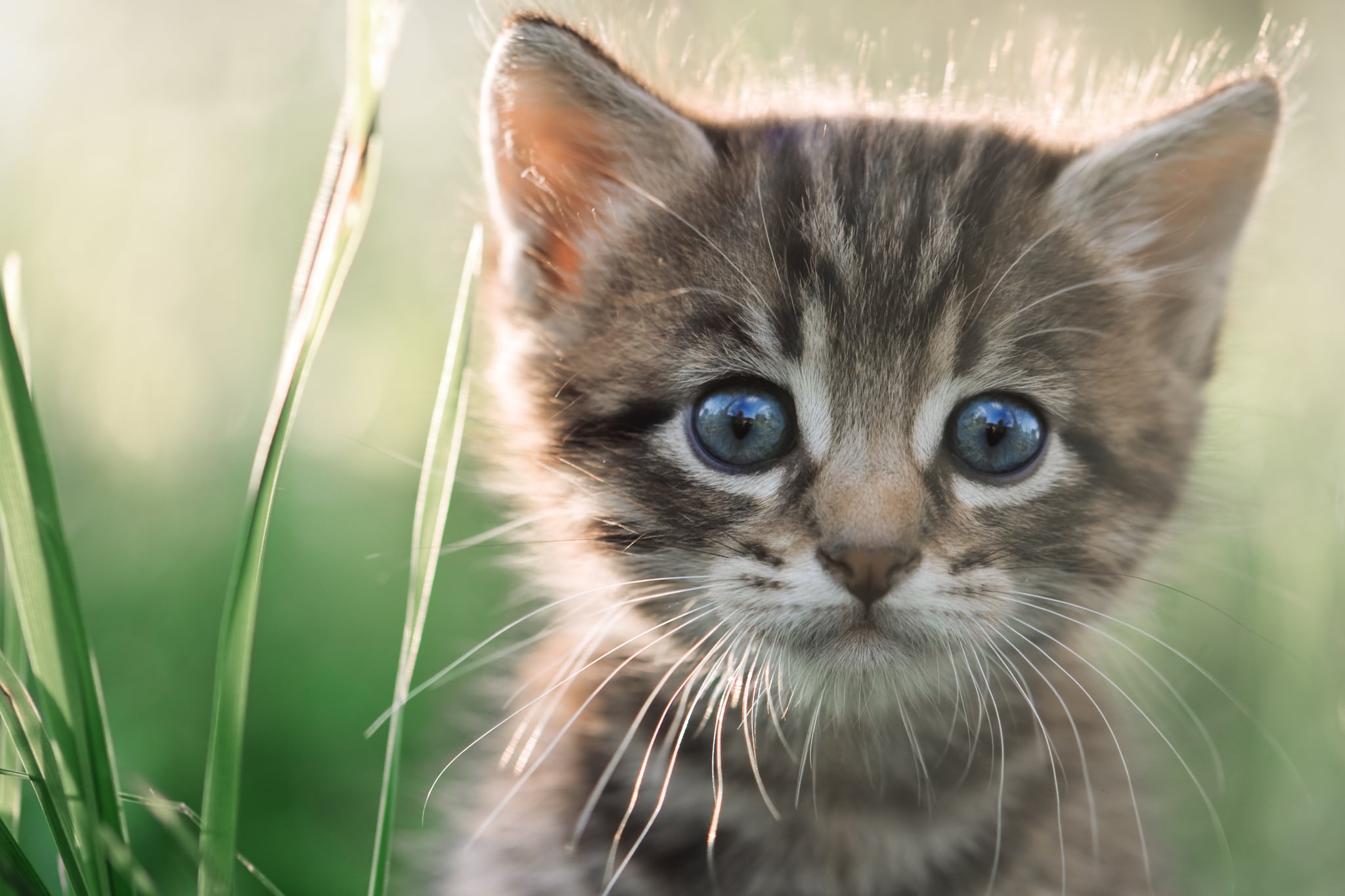Imagine a house cat, curled up on a warm blanket, purring softly. Now, picture a powerful creature, silent and watchful, moving through dense forest or across rocky slopes. Both belong to the same grand family of felines, yet they couldn't be more different in their daily existence. It’s almost like they live on completely separate planets, even though they share a common ancestor from long, long ago. We often see our small house companions as the ultimate representation of a cat, but there are wild relatives out there that truly capture the imagination.
You know, the mountain lion, sometimes called a cougar or puma, is a creature that has long held a special place in stories and even in our worries about wild places. It brings to mind images of untamed nature and the quiet power of the natural world. This animal, a true big cat, stands in sharp contrast to the little furry friend sharing your home. So, what sets these two apart, really, beyond just their size?
Comparing a mountain lion to a house cat offers a really interesting look at how two types of felines, starting from a similar point in history, have gone on to live lives that are worlds apart. From how big they get to what they eat and how they behave, there are so many things that make them distinct. We’re going to take a closer look at these amazing animals and see what makes each one special, and how they fit into the bigger picture of the cat family.
- Kris Radcliffe
- Ilana Glazer Movies And Tv Shows
- Idris Elba Wife
- 22nd December Zodiac
- Cast Of The Real Full Monty
Table of Contents
- The Family Tree - Cat vs Mountain Lion Connections
- What Makes a Mountain Lion So Different from a House Cat?
- How Do Their Lives Play Out - Cat vs Mountain Lion Routines?
- Are Bobcats Part of the Cat vs Mountain Lion Story?
- Where Do Mountain Lions Roam - Cat vs Mountain Lion Territory?
The Family Tree - Cat vs Mountain Lion Connections
When we talk about cats, both the ones that share our homes and the powerful creatures that live in the wild, we are really talking about members of the same big family, the felidae. This family includes everything from the tiny, playful kitten to the large, solitary hunter of the mountains. It's quite something to think about, isn't it? So, while a domestic cat might seem worlds away from a mountain lion, they are, in fact, distant cousins. They share a blueprint, a basic design for a creature with soft paws, sharp senses, and a certain way of moving.
You see, over many, many years, these two branches of the cat family have gone their own ways. One group found a life alongside people, becoming our cherished companions, while the other continued to live out in the wild, adapting to very specific natural surroundings. This split in their life paths has led to the big differences we see today. Basically, it’s a story of how evolution works, taking a common starting point and shaping creatures to fit their own unique ways of living.
The shared heritage means they both possess certain traits that are unmistakably feline. They have similar bone structures, a way of walking on their toes, and a natural ability to be very quiet when they move. Yet, the way these traits show up in a house cat compared to a mountain lion is really quite striking. One is built for comfort and small spaces, the other for vast, untamed expanses. It's truly a testament to nature's ability to create such varied forms from a single lineage.
What Makes a Mountain Lion So Different from a House Cat?
It’s a fair question, isn't it? Beyond the obvious size difference, what truly sets a mountain lion apart from a common house cat? Well, the answers go much deeper than just how big they are. Their very existence, how they spend their days, and what they need to survive are shaped by vastly different forces. A house cat, for instance, often relies on us for food and shelter, while a mountain lion must find everything for itself, every single day. This difference in their daily needs changes everything about them.
Think about it this way: a house cat might spend its afternoon napping in a sunbeam, while a mountain lion is likely tracking prey or finding a safe spot to rest, always aware of its surroundings. The challenges they face are not the same, and so, their bodies and their habits have changed to meet those different challenges. It's almost like they have been given completely separate life missions, and they are both very good at fulfilling theirs.
Size and Build - Cat vs Mountain Lion Proportions
The most immediate thing you notice when comparing a mountain lion to a house cat is, of course, their sheer difference in physical presence. A mountain lion is a creature of considerable mass, a true powerhouse of muscle and agility. To put it into perspective, if you were to try and balance the weight of a single, full-grown mountain lion, you would need something like ten average house cats on the other side of the scale. That's a lot of little felines to equal just one big one, isn't it?
A house cat, on the other hand, is built for a life of comfort and small-scale hunting. They are nimble, able to squeeze into tight spots, and have a lightness that allows for quick, playful movements. Their bones are delicate, and their muscles are designed for short bursts of energy, like pouncing on a toy or a small mouse. They are, you know, perfectly suited for their role as a domestic companion and a small predator of very small creatures.
Despite the big difference in overall body size, it’s interesting to note that house cats actually share the same basic paw shape as their wild family members. The way their toes are arranged, the soft pads, and the retractable claws are all very similar. The mountain lion’s paws, however, are simply on a much grander scale, built to support a much heavier body and to deliver powerful blows to larger prey. They are, in fact, quite wide and strong, giving the animal a firm grip on the ground as it moves.
The body of a mountain lion is long and lean, built for stealth and sudden bursts of speed. They have a powerful tail that helps them keep their balance, especially when moving across uneven ground or making quick turns. A house cat’s tail, while also used for balance and communication, is not nearly as long or as muscular in proportion to its body. So, you can really see how their bodies have changed to fit their very different ways of life, can't you?
Living Spaces - Cat vs Mountain Lion Habitats
Where a creature makes its home tells you a lot about its way of life. For our house cats, their living spaces are typically within human dwellings or very close to them. They might roam a garden, a backyard, or even just a few rooms inside a building. Their needs are simple: warmth, food that appears regularly, and a safe place to rest. They are, you know, quite content with a relatively small patch of ground to call their own.
Mountain lions, by contrast, require vast stretches of wild land. They are creatures of the open spaces, preferring areas with dense cover like forests, rocky outcrops, and brush where they can hide and hunt. Their territory can cover many square miles, and they move across this land with a quiet purpose, always looking for food and avoiding detection. They need these big spaces to find enough to eat and to live without too much contact with people.
The presence of human activity greatly affects where a mountain lion can live. While a house cat thrives on it, a mountain lion needs to keep its distance. They are often found in parts of North America where wilderness still holds sway, like the mountains of Colorado or the wild lands of New Mexico. There have even been sightings recorded by trail cameras in places like Boulder, which shows how these animals sometimes come closer to human areas, perhaps looking for food or just passing through.
This difference in living arrangements also speaks to their behavior. A house cat is accustomed to the sounds and smells of human life, even seeking out human attention. A mountain lion, however, is a solitary animal that avoids people as much as possible. Its very survival depends on its ability to remain unseen and unheard in its natural surroundings. So, their homes really shape who they are, don't you think?
How Do Their Lives Play Out - Cat vs Mountain Lion Routines?
Think about the daily rhythm of a house cat. There’s often a lot of sleeping, some stretching, perhaps a quick dash after a toy or a bug, and then, of course, mealtimes, usually provided by a human. Their routines are often quite predictable and, frankly, a bit relaxed. They don't have to worry about finding their next meal or protecting themselves from larger predators. Their lives are, in a way, pretty easy compared to their wild cousins.
A mountain lion’s daily life, on the other hand, is a constant cycle of hunting, resting, and moving through its territory. Every day brings the challenge of finding food, staying hidden, and being aware of other animals, both prey and potential threats. Their routines are driven by instinct and the demands of survival in a harsh, untamed world. It's a much more demanding existence, as you can imagine.
Hunting Habits - Cat vs Mountain Lion Prey
Both house cats and mountain lions are natural hunters, a trait they share from their common lineage. However, the scale and style of their hunting activities are vastly different. A house cat's hunting usually involves small creatures like mice, birds, or even insects. They are masters of the pounce, using their quick reflexes and sharp claws to catch their tiny targets. They might stalk a toy mouse with the same seriousness as a real one, but the stakes are, you know, much lower.
Mountain lions, as the largest wild cats in North America, hunt much bigger animals. Their diet mostly consists of deer, but they will also take elk, bighorn sheep, and even smaller animals if the opportunity arises. Their hunting strategy involves a lot of patience and stealth. They will stalk their prey for a long time, often for hours, waiting for the perfect moment to launch a sudden, powerful attack. This requires immense strength, speed, and precision.
The mountain lion's growth is a really interesting process, allowing these impressive animals to become top predators in their environments. They must quickly develop the skills and physical abilities needed to take down large prey. This means they learn to hunt from a young age, practicing with their mothers. Their bodies are built for this kind of work, with powerful jaws and claws that can bring down a creature many times their own size.
So, while a house cat might enjoy batting at a feather on a string, a mountain lion's life revolves around the serious business of finding and capturing enough food to survive. The success of their hunting directly impacts their ability to live and thrive. It's a pretty stark difference in their daily pursuits, isn't it?
Growing Up Wild - The Mountain Lion's Path
The path from a tiny mountain lion cub to a powerful adult is a journey of rapid development and learning. These young animals must quickly gain the skills needed to survive in a challenging world. Unlike a house cat kitten, which might spend its early months playing and exploring a safe home, a mountain lion cub is learning the very real skills of a predator from day one. They watch their mother, mimicking her movements and her hunting techniques.
From a very young age, mountain lion cubs practice their pounces and stalks, honing their natural instincts. They learn to be quiet, to blend into their surroundings, and to use their senses to find food. This early learning is crucial because, as they grow, they will need to be able to hunt and live on their own. Their bodies develop quickly, gaining the muscle and coordination necessary for the life of a solitary hunter.
By the time they are ready to leave their mother, usually around one and a half to two years old, they are already quite capable hunters. They have established themselves as creatures able to find food and protect themselves. This process is truly fascinating to observe, even from a distance, as it shows how nature prepares these animals for their important role in the wild. It’s a pretty tough upbringing, actually, when you think about it.
A house cat, in contrast, often has a much more extended period of dependence, sometimes for their entire lives. They don't need to develop the same kind of self-reliance because their human companions provide for them. This difference in how they grow up further highlights the distinct lives these two feline species lead.
Are Bobcats Part of the Cat vs Mountain Lion Story?
When discussing wild cats, the bobcat often comes up, and it's a good question to ask how they fit into the picture alongside mountain lions and house cats. Bobcats are also native to the Americas, just like mountain lions, and they share some general characteristics with their larger cousins. They are wild felines, after all, and they have a certain grace about them. You know, some people might even mistake them for a smaller mountain lion at first glance.
However, bobcats are quite different in size and some other features. They are much smaller than mountain lions, more akin to a medium-sized domestic dog in terms of their body mass. They also have a distinctive short, "bobbed" tail, which is how they get their name, unlike the long, cylindrical tail of a mountain lion. This tail difference is a pretty clear sign when you're trying to tell them apart.
Spotting the Differences - Bobcat vs Mountain Lion Features
At first look, the difference in size between a bobcat and a mountain lion is quite striking. A bobcat is a much more compact animal, while a mountain lion is long, lean, and very muscular. Bobcats tend to have thick, cylindrical tails that are much shorter, typically measuring anywhere between four to eight inches. Mountain lions, on the other hand, possess a long, heavy tail that can be nearly half their body length, which helps them balance.
Bobcats also have distinct markings, often with spotted or striped coats, which help them blend into their surroundings. Mountain lions usually have a more uniform, tawny color, though their cubs might have spots. Their ears are another distinguishing feature; bobcats often have tufts of fur on their ears, which mountain lions do not. So, there are quite a few visual cues to help you tell them apart.
When it comes to where they live, bobcats are remarkably adaptable. They can be found in a wide variety of places, including forests, deserts, and even suburban areas across the United States. This makes them a more common sight in some populated regions than the more elusive mountain lion. Mountain lions prefer more remote, wilder territories, as we discussed earlier. So, while both are wild cats, their preferred living arrangements are not the same.
Both bobcats and mountain lions are graceful wild cats, and it's true that they can appear similar, especially if you only get a quick glimpse. But if you know what to look for, their physical characteristics and preferred environments really do set them apart.
Where Do Mountain Lions Roam - Cat vs Mountain Lion Territory?
Mountain lions are found across a wide range of the Americas, from Canada down to the southern tip of South America. They are, you know, incredibly adaptable to different environments, as long as there's enough food and cover for them. In the United States, you'll typically find their populations in states with large wild areas. For example, some of the closest known mountain lion groups to certain parts of the country are in places like Texas, New Mexico, Colorado, and Nebraska.
These animals require vast territories to hunt and



Detail Author:
- Name : Dewitt Metz
- Username : abdullah70
- Email : yasmine.braun@gmail.com
- Birthdate : 1972-03-04
- Address : 992 Freida Creek Lake Guido, VT 41623
- Phone : +1.832.912.7639
- Company : Murazik Inc
- Job : Watch Repairer
- Bio : Et possimus consequatur soluta omnis voluptates maiores sunt. Quidem atque et eos consequatur ad iure.
Socials
tiktok:
- url : https://tiktok.com/@hollie_xx
- username : hollie_xx
- bio : Mollitia ut sint mollitia est debitis aut facere.
- followers : 2544
- following : 1573
facebook:
- url : https://facebook.com/holliereynolds
- username : holliereynolds
- bio : Perspiciatis molestiae a ipsam laborum ex fugiat et sed.
- followers : 3110
- following : 2648